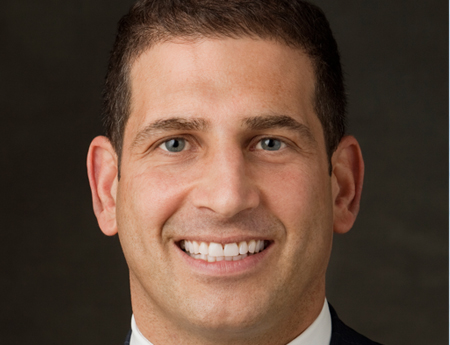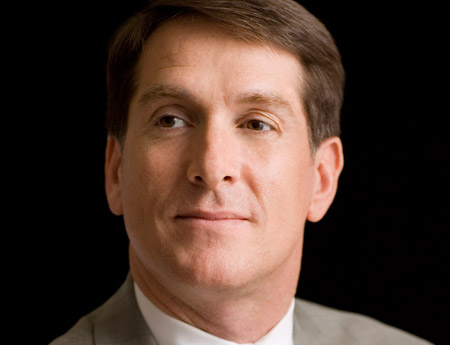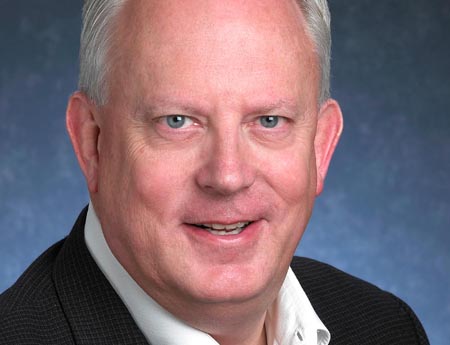The Go-for-Brokers

CEOs may get all the M&A press, but behind-the-scenes advisors and bankers are at the heart of all post-recession station group deals.
They work mostly in secret, testing the waters when a station group is, as the painstakingly worded releases state, exploring strategic alternatives. They find buyers for sellers, and sellers for buyers, and slip out of sight after the contracts have been signed, finder’s fee in hand.
Fully $10.9 billion worth of TV stations changed hands in 2013, according to SNL Kagan, on top of $2 billion in 2012. The acquiring group chiefs—David Smith of Sinclair, Dave Lougee of Gannett, Larry Wert of Tribune, among many others—have emerged as the face of station consolidation.
But behind these public figures are the brokers— trusted confidantes, valuation whizzes, strategic masterminds, creative dealmakers— making sure the client stays on its Wall Street-pleasing acquisitive streak, the family gets the best possible return on its long-held batch of stations, or the merger makes both parties happy. They navigate the regulatory morass, line up the financing and do all they can to get both sides to say yes. As one broadcast CEO describes the relationship, “I rarely do anything in our space without informing those guys.”
We spoke with some of the most significant brokers in local TV, to see what’s gotten them to where they are, and how they view the future of station consolidation.
THE ULTIMATE MAN IN THE MIDDLE
The smarter way to stay on top of broadcasting and cable industry. Sign up below
John Momtazee, Managing Director, Moelis & Co.
When station M&A was frozen during the recession, John Momtazee was anything but still. The Moelis & Co. founding partner was traversing the country from his Los Angeles base, meeting with broadcast leaders, chatting them up over dinner and fine red wine, and putting a face in their minds for when the industry’s chiefs once again starting buying and selling stations.

“He let everybody know he was out there, ready to do business,” says Bob Prather, former Gray Television president and current president/CEO of Heartland Media. “He was the one guy at that time who was staying active, and I think it paid off.”
It did indeed. The logjam burst open late in 2011, when Sinclair acquired the Freedom stations, which had hired Moelis to find the ideal buyer, for $385 million. The onslaught of deals that followed very often had Moelis, and Momtazee, in the middle of them—working with Newport TV on its sale to multiple buyers, Local TV on its sale to Tribune, Hoak on its deal with Gray and, most recently, advising Allbritton on its drawn out, complicated $985 million sale to Sinclair.
And when Sinclair needed to offload a handful of stations to win regulatory approval for that deal, it hired—yes—Moelis to find the buyers.
Momtazee has worked with Meredith and Media General on their deals, and a bunch of radio station groups too, and has pitched in with restructuring expertise for Ion and Tribune. “He’s on one side or the other of most of the major deals of the last few years,” says one group president. “Everybody else is in second place.”
Momtazee, 43, declined to speak with B&C for this profile. But a survey of highest-level broadcast leaders who know him well paint a picture of an eminently trusted advisor and a creative dealmaker—and one who has emerged as the “It Man” in station M&A, according to one broadcast exec.
“In terms of strategic thinking, I don’t think there’s anyone better than John,” says Stephen Gibson, Allbritton senior VP and CFO. “He was very integral to helping shape our decision about if and when to bring a transaction to the marketplace.”
His role didn’t end there. Momtazee is a “master at deciphering levels of interest,” adds Gibson, separating the tire kickers and black book peekers from those who truly are interested in buying TV stations, then thinking creatively to get both sides to shake on it.
Momtazee, with degrees from Stanford and the U. of Chicago, was head of broadcasting investment banking at UBS before cofounding Moelis & Co. with Ken Moelis in 2007. He may not have been in the space as long as other brokers, but he’s proved adept at quickly grasping the intricacies of broadcasting. “He’s taken the time to really dig in and understand the industry and the players,” says Perry Sook, Nexstar president and CEO. “I find he offers insights and observations that you don’t hear from other investment bankers in the main.”
Those who know Momtazee describe an intensely engaged advisor who is constantly on the road, working seven days a week, meeting with would-be buyers and sellers— and one with a taste for high-end red wine and Tesla automobiles. They say he brings together two key qualities not often found in an individual station wheeler-dealer. “He’s highly energetic and relationship-oriented and funny,” says Brandon Burgess, Ion Media Networks president and CEO. “On the other hand, he gets stuff done. Usually, you’re one or the other.”
Its massive deal with Sinclair finally closed, those at Allbritton can breathe a huge sigh of relief, and can thank Momtazee for his tenacity— from looking into the best options for the group way back in May 2013, to helping get the deal over the finish line in recent weeks. “He’s got an impeccable reputation from all people he’s done business with,” says Gibson, “on both sides of the table.”
SAVVY SPECTRUM SPECULATOR
Elliot Evers, Managing Partner, Media Ventures Partners
With entrepreneurs gobbling up spectrum with an eye on cashing in big-time at auction, Elliot Evers, managing partner at Media Ventures Partners (MVP), has emerged as the go-to guy in that Washingtonian world. MVP represents OTA Broadcasting, a subsidiary of computer maven Michael Dell’s, on acquisitions. With OTA shelling out around $150 million on stations, including deals for WEBR in New York, KVOS in the Seattle market and KMI-KPSE Palm Springs, Evers is a busy man.

“We are a thought leader on spectrum speculation,” says the San Francisco-based exec.
MVP did around a billion dollars in deals last year, including radio station sales, with the bulk of it on telecom outfits. While fellow broker Moelis & Co. gets the major station group transactions, Evers and MVP do execute smaller deals, such as sending WGXA Macon the way of Sinclair Broadcast Group in April, and working with Roberts Broadcasting to offload stations in St. Louis and Columbia, S.C. to Ion.
Some $13 billion worth of TV stations has changed hands the past few years, but Evers says a couple billion dollars’ worth is still primed to move. “There’s some more of that to go,” he says, “though the wind has been taken out of the major acquiring groups’ sails.”
With degrees from UC Berkeley and the Sorbonne, Evers cofounded MVP in 1987. He brings a law degree and deep knowledge of the regulatory thicket and capital markets to the negotiating table. “We have a very, very good Rolodex,” Evers says. “We’re dangerous.”
One client, who asked to be unnamed due to relationships with several M&A brokers, agrees. “Elliot has a really good nose,” says the owner. “If he calls and says something looks interesting, his call gets returned right away.”
RIDING THE M&A WAVES
Frank Higney, VP, Kalil & Co.
Frank Higney, VP at Kalil & Co., has ushered in his share of M&A deals in the recent surge, including Sinclair’s acquisition of eight stations from New Age Media ($90 million) and Nexstar’s purchase of seven Grant Company stations ($87.5 million).

Higney, however, does see Tom Wheeler’s ascension to chairman of the FCC—and his outspoken opinions about big mergers—taking some speed off that surge.
“Most assuredly, the landscape for mergers and acquisitions changed with chairman [Tom] Wheeler,” he says. “I think it certainly took a pause as everyone assesses the new rules and how they are going to accommodate those rules.”
Higney—who received a graduate degree in telecommunications management from Indiana University, and joined Kalil & Co. in 1992—doesn’t believe the M&A lull will last though, citing the Sinclair and Allbritton deal recently being approved.
“I think it will return to a fairly robust market. The larger companies recognize what their strengths are and their synergies in acquiring these other companies.”
For Higney, the new regulations are not a particularly challenging obstacle for an industry inundated with them.
“The environment has been strong. We’ve had a brief respite as everyone tries to figure out what to do under this new regulatory landscape, but I think in the near future you will see things pick up as everyone figures out how to work around these rules.” —Luke McCord
PRIVATE PRACTICE BEFORE PUBLIC SERVICE
John Chachas, Founder, Methuselah Advisors
Last month, Scripps and Journal Communications uncorked a one-two punch, declaring they would merge and then spin-off into separate companies—one dedicated to broadcast TV (E.W. Scripps), the other to newspapers (Journal Media Group). John Chachas is the man who fostered the deal, which will result in a fortified Scripps generating a projected $800 million in annual revenue.

This was hardly the first time at the rodeo for Chachas, who founded Methuselah Advisors in New York after more than seven years as a partner at Lazard. He advised Journal Communications on its $215 million acquisition of WTVF Nashville in 2011, helped steer Hearst’s privatization of Hearst-Argyle in 2009 and handled many more deals over a 26-year career.
Setting up his own shop has allowed Chachas to pursue impactful, if sometimes thorny, deals that, in his words, “really transform companies.” Stan Hubbard Jr. of Hubbard Broadcasting, whom Chachas advised during the company’s 2006 Ovation joint venture, says he’s already doing just that. “John brings the unique perspective of thinking like an owner. He brings ideas, not deals,” Hubbard says.
Chachas plans to remain “very interested in the transition of traditional media,” though he also made headlines in 2010 with a Republican bid for Senate in his home state of Nevada. A political second act still seems likely, though perhaps not in the near term. “I turn 50 this November, so I think I’ve got time,” he says. “There’s something noble about the idea of having your career life and then going off to public service for some period of time.” —Ariana Romero
THE STABILIZING INFLUENCE
Larry Patrick, Founder and Comanaging Partner, Patrick Communications
Larry Patrick estimates that he has bought 3,200 pizzas in the last 12 years.

The 64-year-old Maryland-based TV and radio station broker has visited 58 universities to talk to students, always buying pizza for them after class. And before the snacking, he always imparts some of the same lessons he learned many years before when he was working for the National Association of Broadcasters.
Upon graduating from law school at Georgetown, Patrick, who has owned more than 60 radio stations and brokered hundreds of TV and radio deals as the founder and comanaging partner of Patrick Communications, calls his job with the NAB, “the single greatest thing that happened to me professionally,” he says. At corporate retreats, Patrick picked the brains of CEOs and COOs. One week, he abruptly took over a station in Raleigh, N.C., for two days when the manager went on vacation. “He said, whatever you do don’t call [me],” Patrick says. “I was 29 years old and had not managed a station in my life.” After owning and running stations in the 1980s and early ‘90s, Patrick sold out and went into brokering full time.
“It’s intellectually challenging [to negotiate] when the buyer and seller are very far apart, not talking to each other but past each other,” Patrick says. “It’s not about the money, it’s about the personalities and emotions and understanding the motivations for what makes the buyer and seller work out the details of the transaction.”
Perhaps his biggest challenge came in 2005, when he was tasked with selling Paxson Communications Corporation. After retooling the structure and programming, ameliorating conflicts with NBC and changing the company’s name, Patrick brokered the stock sale of Ion Media Networks for $2.6 billion in 2008. “When I got there, we were lucky to get an appraisal for half of that,” Patrick says. In May, B&C ranked Ion No. 1 in its list of the top 25 station groups.
“He’s better than anyone else I know at helping operators communicate with the financial side,” says Greg Guy, a comanaging partner at Patrick Communications who has worked with Patrick for 15 years. “He really speaks both languages.”
That’s because Patrick is both a broker and a station owner. He goes to stations that are dealing with issues, builds them back up and only then does he sell them. More important than bringing in a new manager or solving technical issues, Patrick says, is “changing the morale of the station.”
“He knows exactly how hard it is on a staff,” says his wife of 18 years and company comanaging partner Susan Patrick. “He brings a lot of stability in those situations and takes great pride in that.”
The TV station landscape is changing. Patrick expects a flurry of TV transactions in the next few years, now that the economy has started to recover, and predicts 10 or 12 companies will eventually control 50 to 100-plus stations and 85%-90% of total revenue. “It is almost inevitable,” he says.
For now, Patrick has stations to sell — and pizzas to buy.—Jonathan Kuperberg
Michael Malone is content director at B+C and Multichannel News. He joined B+C in 2005 and has covered network programming, including entertainment, news and sports on broadcast, cable and streaming; and local broadcast television, including writing the "Local News Close-Up" market profiles. He also hosted the podcasts "Busted Pilot" and "Series Business." His journalism has also appeared in The New York Times, The L.A. Times, The Boston Globe and New York magazine.

